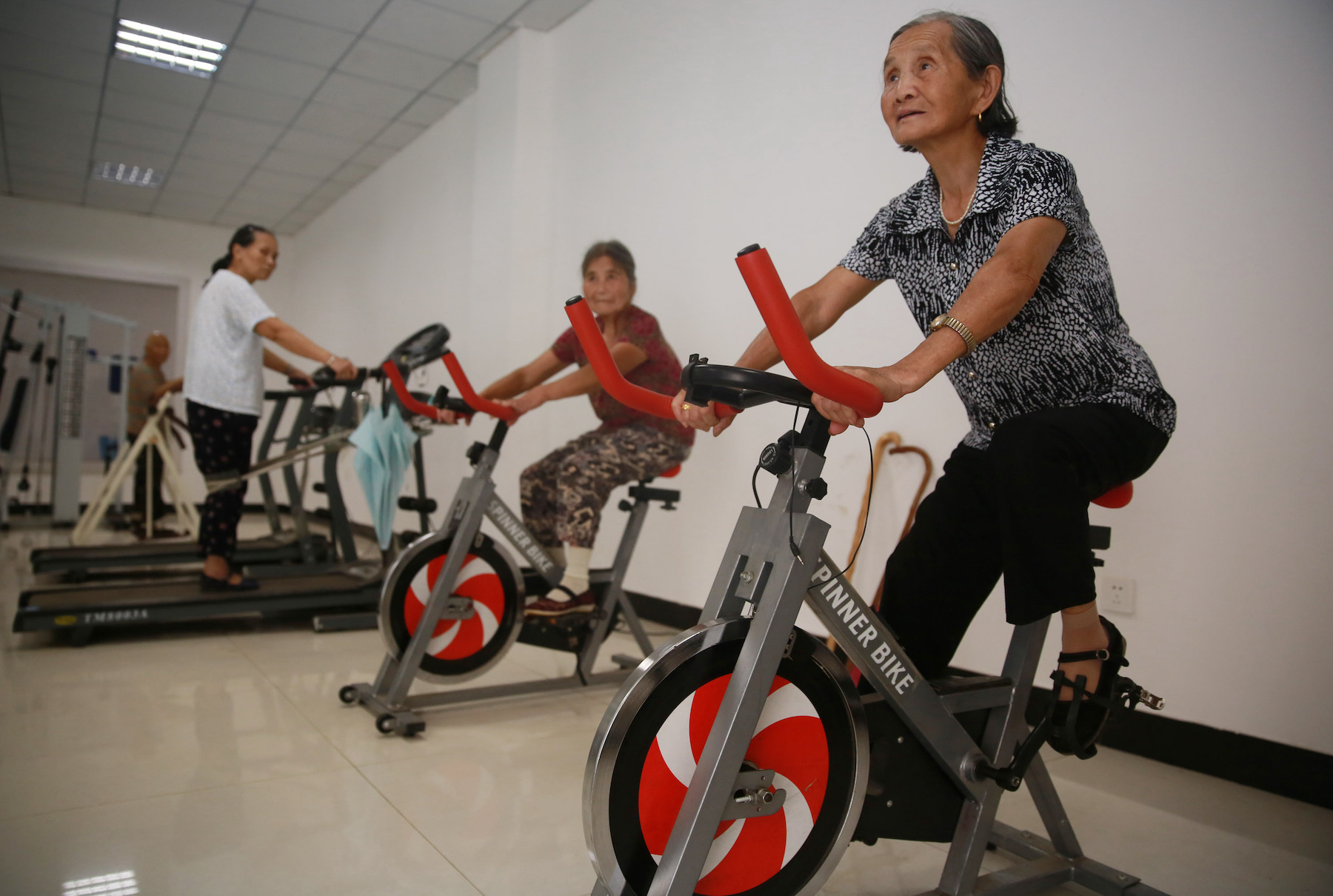In this edition:
- Retirees protest against changes to public health insurance system;
- Proposal for gradually delaying retirement age to 65 faces public criticism;
- National “work for relief” program implemented on state-invested infrastructure projects.
Retirees protest against changes to public health insurance system
THE STORY: In Wuhan and Dalian, older citizens protested in the hundreds or thousands against changes to public health insurance policies that reduced monthly limits. In Guangzhou, retired workers launched a legal defence against declining health insurance coverage in violation of national laws on how localities use the medical insurance funds. The Guangzhou authorities promptly made up for improper deductions taken in recent years.
THE CONTEXT: In April 2021, State Council guidance on outpatient health insurance coverage shifted a portion of funds from individual health insurance accounts to public accounts. Retired workers use their individual accounts for medication, the reform has affected their out-of-pocket expenses, and they further fear being soon unable to purchase medication.
WHY IT MATTERS: China’s ageing population and financial crisis, including local government deficits resulting directly from the high costs of pandemic prevention measures, have affected the state’s health insurance fund. As reported by China Labour Trends, the recent change in distributing funds from individual accounts to public accounts may have a short-term effect to increase the fund’s balance, but it is not a long-term solution.

Photograph: humphery / Shutterstock.com
Proposal for gradually delaying retirement age to 65 faces public criticism
THE STORY: A CITIC Securities report indicates that national policy goals to gradually extend the legal retirement age in China may be imminent. The current retirement age in China is 60 for most men, and either 55 or 50 for women based on their type of employment. Under the reported plan, the retirement age for women will be unified at 55 by 2025, and the retirement age for workers will be increased by several months at a time until 2055, when the age will be set at 65 for workers of all genders. After news of the CITIC report, citizens voiced concerns about their lower return on investment into the social security system and their ability to find employment at an advanced age.
THE CONTEXT: China’s social security system is facing a crisis in light of the country’s disproportionately large elderly population. The state is trying to increase birth rates through its three-child policy, lengthened parental leave policies, and other incentives. In the meantime, many older citizens are going back to work, seeking employment opportunities to support themselves and younger generations. Although delaying the retirement age may relieve the amount of pensions being paid out, it may not increase overall contributions, according to the CITIC report. This is because China’s older population already faces barriers to employment, and employers often do not sign formal labour contracts, meaning social security payments are not part of the deal.
WHY IT MATTERS: Those past the legal retirement age in China are not classified as employees under the law, meaning that companies are exempt from most labour laws in regard to these already vulnerable workers. For example, a 60-year-old logistics worker died on the job last month, but because he was past the retirement age, his family is not eligible for workplace compensation. Some companies even seek out older hires to save on labour costs as a result of this legal loophole.
National “work for relief” program implemented on state-invested infrastructure projects
THE STORY: China has implemented a “work for relief” program to supplement welfare programs, and it applies to domestic infrastructure projects. China’s Measures for State Welfare-to-Work Administration (Administrative Measures) were revised for implementation on 1 March 2023. Originally promulgated and implemented in 2014, the new version allows for state-invested infrastructure projects to hire labour under a “cash for work” program. The Administrative Measures also call for “using manual labour over machinery as much as possible” and hiring locally rather than using construction teams.
THE CONTEXT: According to China’s National Bureau of Statistics, the overall unemployment rate in December 2022 was 5.5 percent, and the number of migrant workers is increasing year-on-year since the pandemic lockdowns and work stoppages affected migration patterns in 2020. Low-income agricultural workers who are not migrants are the main target group of the program. According to Times Media, Professor Su Jian, the Director of the National Economic Research Centre of Peking University, said the plan is “not to improve production efficiency, but to help the poor and solve the employment problem of low-income groups, so it has a certain charitable nature.”
WHY IT MATTERS: The Administrative Measures avoid using traditional labour and employment terms. One analysis points out that this language gets around constraints of China’s minimum wage requirements in the Labour Law, as well as social security and other provisions. CLB believes protecting the rights and interests of China’s vulnerable populations at work should be paid attention to, and workers’ health and safety should be a priority in the program’s implementation.
CLB's January 2023 labour news roundup is available here.
Further CLB Reading:
- What You Need to Know About Workers in China: China’s social security system (August 2021)
- China’s looming social welfare crisis needs urgent government attention (August 2021)
- Extension of retirement age in Jiangsu province highlights gender effects of labour policies (March 2022)
